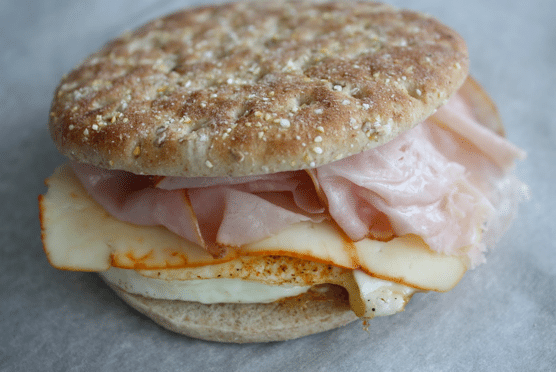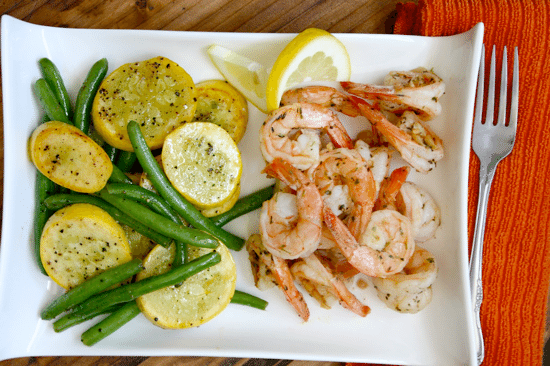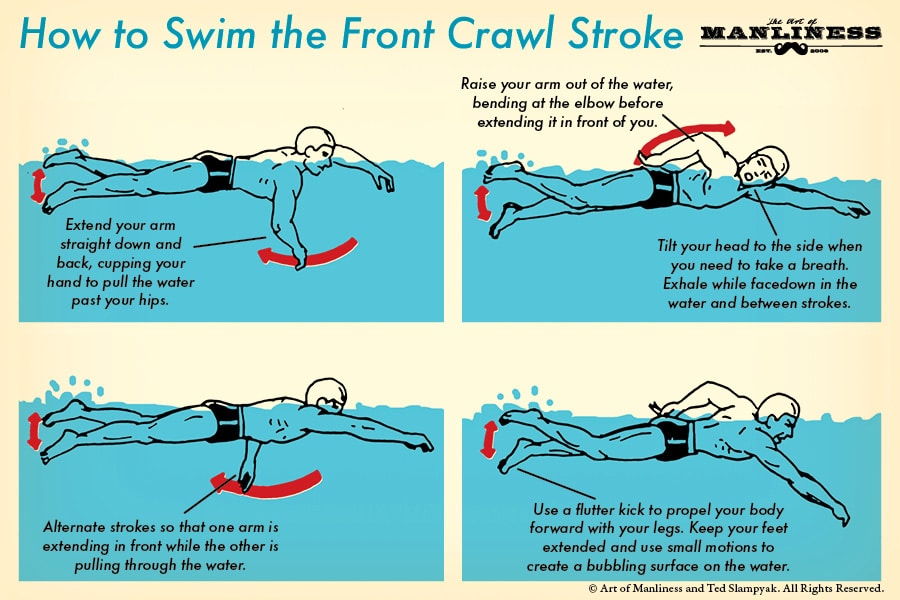Last week, I was enjoying a successful post-fishing lunch at Puckett’s Grocery in Leipers Fork, TN. Perhaps I should clarify…I was indulging in Southern comfort food: fried catfish, mac n’ cheese, mashed potatoes, turnip greens, drop biscuits, and an ice cold Yazoo Pale Ale. Delicious – yes. Healthy – no way. Sure, maybe I went a bit overboard, but I was simply trying to help a friend celebrate. After all, he had just reeled in a 9-lb bass.
It’s a known fact that Southerners enjoy our traditions. From afternoons spent fishing, to a day on the farm, or to an evening bonfire sipping moonshine with friends – Southern culture is alive and proud.
Yet, whenever I discuss my love of Southern food to strangers (anyone not from the South!), I typically get the following response: “Southern food is so unhealthy.”
Sure, they’ve got a point. We are pretty liberal with our use of butter, cheese, cream, salt, and oils – or as I like to say – adding a little ‘love’ to our meals.
But, not all Southern food is “bad.” In fact, we pioneered the organic, home-grown movement before it became fashionable among foodies. My 102-year-old grandmother would have laughed at words and phrases like “sustainably raised,” “farm-to-plate,” or “locavore.”
With that said, I do acknowledge my indulgent Southern meal is not something one should eat every day. In fact, I try to limit such meals to special occasions.
As a food and lifestyle writer, I hold myself accountable for providing wholesome, health-conscious meal ideas and recipes to my readers. That being said, I’ll be the first to admit that I’m no dietician, medical doctor, or licensed trainer. However, I do know what works when it comes to eating healthy and losing weight – partially from personal experience, and partially from speaking with others.
Playing sports throughout my life allowed me to always enjoy a high level of physical fitness. That was, of course, until college came along. I blame most of my weight gain on my penchant for drinking Sierra Nevada Pale Ale – not to mention my weekly trips to Weaver D’s in Athens, Georgia. Looking back, I’m embarrassed that I let myself gain so much weight.
Nevertheless, by reincorporating exercise and healthy eating into my lifestyle, I was able to get back into fighting weight in less than a year, eventually getting to the point where I now enjoy competing regularly in marathons.
After witnessing my results, friends of mine would ask, “How did you do it?” “It’s not rocket science,” I would tell them. “It all boils down (pun intended) to exercising and eating the right kinds of foods – and all in moderation.”
I always knew I could put my plan into a simple format for others to use. Thus, I began sketching out the following ideas for a book proposal last year. Several friends kept asking for the information and have since been successful in dropping 30, 40, and even 50 pounds to reach the weight of their dreams.
So, what’s the moral of my story?
You can have your fried chicken and eat it too! Just keep in mind that moderation is the key if you are trying to lose weight or maintain your current figure, not to mention vigorous exercise several times a week.
The following guidelines are a mere foundation for simple, healthy living. Of course, I’ve supplied some of my favorite recipes to help you reach your goals. For those of you looking to renew that New Year’s resolution – here’s your chance. Become your best!
The NO, LOW, GO Diet
Philosophy: Don’t starve your body; eat the right kinds of foods to keep your metabolism constantly working in your favor. Don’t consume more than you burn. Don’t be afraid to indulge every so often. Your success is determined by YOU.
NO
Avoid these foods whenever possible, especially when trying to lose weight:
- Fast Food
- Soft Drinks
- Processed Foods
- Fried Foods
- White Starches (Breads, Potatoes, Pasta, Rice)
- Cream-Based Soups (Chowders, Bisques)
- Mayonnaise (and other condiments)
- Mayo or Cream-Based Salad Dressings (Ranch, Creamy Italian, Creamy Caesar, Blue Cheese)
LOW
Consume these in moderation:
- Alcohol
- Dairy
- Carbs (try to source from Whole Grains)
- Salad Dressing (Oil, Vinegar, Italian, Low-Fat Dressings served on the side)
- Whole Grains (Pasta, Brown Rice, Breads, Quinoa)
- Sweet Potatoes
- Oatmeal (Stick to minimally processed forms)
- Kosher Salt
- Fruit Juices
- Yogurt, Low-Sugar or Greek
- Sport Drinks (Gatorade, Powerade, vitaminwater)
- Unsalted Butter
- Sour Cream
- Frozen Health Foods (Lean Cuisines, Frozen Organic Meals)
- Appetizers at Restaurants (Start with a salad instead)
- Desserts (Chocolate, Cakes, Ice Cream)
GO
Fill up on as much of these foods as possible:
- Water (at least 8 glasses per day)
- Lean Protein (Chicken, Turkey Breasts, Pork, Seafood, Lean Red Meat)
- Vegetables
- Fruits (especially Blackberries, Blueberries, Cranberries, and Strawberries)
- Beans (Black Beans, Kidney Beans, Pinto Beans)
- Hummus
- Almonds
- Salads
- Vegetable or Low-Fat Broth-Based Soups
- Eggs
- Olive Oil
Guidelines and Meal Ideas
BREAKFAST is the most important meal of the day. It gives your body the chance to start your metabolism (fat burning furnace) first thing in the morning. The problem is that most people skip breakfast, thinking they’ve reduced their overall caloric intake for the day. What happens? Your metabolism doesn’t start. You overeat at lunch or from snacking because you feel entitled. Instead – eat breakfast! I’m not talking about cereals, bagels, or pastries. The worst thing you can do is start your day off with sugar and carbs. This spikes your blood sugar, which shuts down your metabolism, only to cause a mid-morning crash which will likely lead to overeating later in the day. In my opinion, eggs are your best friend in the morning. Full of protein, and virtually without carbs, you want to focus your efforts on eating eggs as much as possible for breakfast. Forget the cholesterol scares of the 1980s – eating the whole egg, not just the whites, has actually been shown to improve “good” cholesterol levels. 1 – 3 eggs each morning is a simple and easy breakfast. Vary your preparation method: scrambled, fried, poached, hard boiled, or even as a simple omelet with diced veggies and low-fat cheese so that you don’t get stuck in a routine. Here’s my AoM guide to making better eggs. If you can’t cook, or don’t think you have time, invest in a microwaveable egg poacher. It turns out a decent poached egg in under a minute – without any added fat.
Meal Option 1
1 – 3 Eggs (Scrambled, Fried, Hard Boiled, Veggie Omelets)
Option 2
Non-Fat Greek Yogurt (Higher in protein and low in sugar)
Granola (Bear Naked Peak Protein)
Fruit (Apples, Mixed Berries – Blueberries, Strawberries, Raspberries)
Option 3
Hummus
Fruits and Vegetables
Option 4
Better Breakfast Sandwich (Serves 1)

1 Arnold’s Thins Whole Grain Sandwich Bun
1 Large Egg
Kosher Salt
Freshly Cracked Pepper
1 Slice Muenster Cheese
2 Thin Slices Deli Ham
Mustard
Place the sandwich thins into a toaster. Meanwhile, in a nonstick pan over medium-high heat, fry egg (no oil or butter needed) for 3 – 4 minutes, or until egg reaches your desired preference. Season egg with salt and pepper. Next, add egg to toasted sandwich slice and top with ham and cheese. Add mustard (if desired) and top with the remaining slice of bread. Serve.
SNACKS are a good thing, so long as you make the right choices. Again, think about reducing your carbs to keep your metabolism burning. As you start to get hungry a few hours after breakfast, add another log to the fire by choosing snacks that are full of protein and low in carbs as described in the guidelines that follow. Get through the afternoon with a second snack to provide energy before an evening workout.
Snack Options for Morning and Afternoon
Almonds (Handful)
Hard Boiled Egg
2 oz. Low-Fat, String Mozzarella, or Cottage Cheese
Apple
Protein Bar (Low-Sugar)
Bear Naked Peak Protein Granola (Handful)
Hummus (2 – 3 oz) and Freshly Cut Veggies
Can of Tuna (Dress up w/ Lemon Juice, Salt, Pepper)
5 – 6 Whole Grain Crackers and Low-Fat Cheese Slices
LUNCH can be difficult because you are often forced to eat out. The chef at your favorite restaurant has one thing in mind – taste. He’s not interested in your health, diet, or well-being. Salt, saturated fats, oils, cream, butter, etc. are all used in order to make bland food taste incredible. Keep in mind the basic philosophy whenever ordering. Think lean proteins (chicken, fish, lean red meats) that are prepared without extra fat (grilled, roasted, baked) along with vegetables (steamed, sautéed, grilled, roasted) and whole grains (brown rice/pasta/quinoa). Unfortunately, most restaurants do not offer whole grain choices – in these instances, sub out the baked potato, fries, rice, pasta, etc. for a double serving of vegetables or a side salad. Speaking of salads – this should be your go-to lunch option. Order greens with plenty of vegetables and some sort of lean protein to keep you full. Dressings should always be served on the side. No white dressings (ranch, blue cheese, creamy variations). Choose oil and vinegar, reduced-fat and sugar dressings, or simply lemon juice and olive oil.
Lunch Options
Salads with a Lean Protein (Dressings on Side)
Grilled/Roasted Proteins with Vegetables
Low-Fat/Low-Carb Broth-Based Soups (Vegetable Soup, Chicken Noodle w/ Whole Grain Pasta)
Green Bean, Cherry Tomato, and Feta Salad (Recipe below – serves 2)

2 Large Handfuls French Green Beans (Haricots Verts), cleaned and trimmed
Kosher Salt
1 Cup Cherry Tomatoes, washed
1/4 Cup Crumbled Feta Cheese
6 Tablespoons Extra Virgin Olive Oil
2 Tablespoons Champagne Vinegar
1 Shallot, finely minced
1/2 Teaspoon Dijon Mustard
Fresh Cracked Pepper
Heat a pot of salted water to boiling over high heat. Add green beans, and keep immersed in the water for 45 seconds – 1 minute. Remove from heat and immediately place green beans into ice water. Thoroughly dry green beans and place on a serving platter. Top with cherry tomatoes and crumbled feta. Create a dressing by whisking together the last five ingredients. Pour over salad, toss, and serve.
DINNER should be eaten as early as possible. You want to allow your body time to digest and process your food. This will not only aid in sleep and digestion, but will also ensure that you wake up hungry to eat breakfast. You will encounter the same problems at dinner as with lunch, as this tends to be a social meal. Follow the same guidelines when dining out, and remember that your choices will dictate your success. Keep alcohol to a minimum. I do endorse a glass of red wine at every dinner. If you try to go too extreme, like cutting out all alcohol, sugar, etc. – you will most likely fail. Keep it in moderation; 1 – 2 glasses of red wine at dinner or in the evening is acceptable.
Dinner Option 1
Grilled, Roasted, or Pan Seared Lean Proteins (Prepare with Olive Oil)
Beans/Legumes
Vegetables (Steamed, Roasted, Pan Sautéed)
1 Fist-Sized Portion of Brown Rice, Sweet Potatoes, or Whole Grain Pasta
1 Glass of Red Wine
Option 2
Sautéed Shrimp (Serves 1)

1 Tablespoon Extra Virgin Olive Oil
2 Cloves Garlic, minced
1/2 lb Large Shrimp, peeled and deveined
1/2 Lemon
1/2 Teaspoon Creole Seasoning
Heat a nonstick skillet over medium-high heat, add oil. Next, add garlic and sauté for 30 seconds, careful not to burn. Add shrimp, cook for 1 – 2 minutes. Finally, add lemon juice and seasoning – cook until shrimp are bright pink and firm, another 2 – 3 minutes. Serve.
Option 3
Squash + Green Beans
1 Handful Green Beans, ends trimmed
Kosher Salt
1 Yellow Summer Squash, sliced
Extra Virgin Olive Oil
Freshly Cracked Pepper
Bring a shallow pot of water to a slow boil, add salt. Add beans and blanch for 30 seconds. Remove to an ice bath until chilled and crisp. In a separate skillet over medium-high heat, add squash and drizzle with olive oil. Season with salt and pepper, and cook until just tender, 3 – 4 minutes. Add beans back in with the squash to heat through – taste and adjust seasoning as necessary. Serve with shrimp.
DESSERT should be in moderation. Remember that you are trying to keep your sugar/carb intake at a minimum. Go for non-fat or frozen yogurt dressed up with sliced fruits, or even grilled fruits when the craving for something sweet arrives. Of course, if you can’t resist the temptation, eat slowly and savor the food, which should help you eat less.
Listen to our podcast on how to lose weight and keep it off forever:








